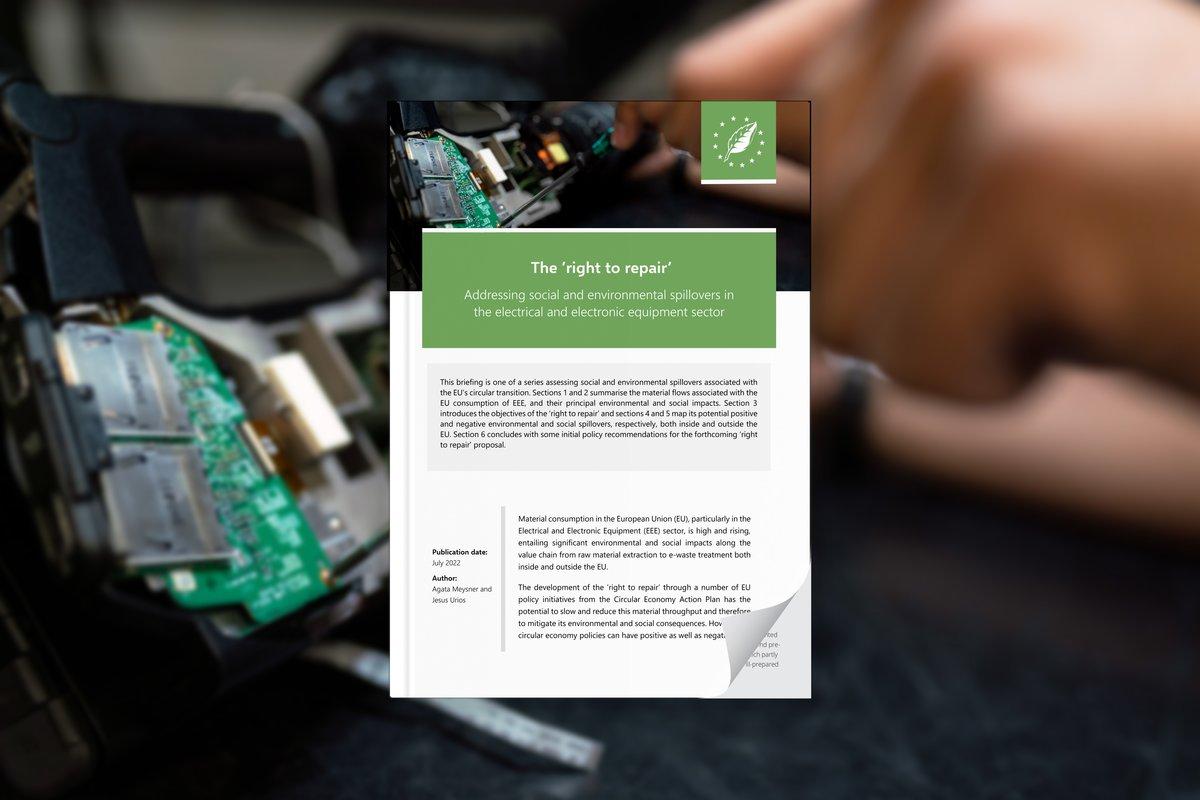AUTHORS: Jesus Urios, Agata Meysner
This briefing maps out some of the principal spillovers that may be associated with the introduction of the ‘right to repair’ in the EEE sector in particular, including implications for job creation, labour standards and the role of social economy actors in the repair economy, as well as possible rebound effects both inside and outside the EU, and sets out some initial policy recommendations to address them.
Material consumption in the European Union (EU), particularly in the Electrical and Electronic Equipment (EEE) sector, is high and rising, entailing significant environmental and social impacts along the value chain from raw material extraction to e-waste treatment both inside and outside the EU.
The development of the ‘right to repair’ through a number of EU policy initiatives from the Circular Economy Action Plan has the potential to slow and reduce this material throughput and therefore to mitigate its environmental and social consequences. However, all circular economy policies can have positive as well as negative environmental and social spillovers, both inside and outside the EU, which should be carefully assessed in policy design.
Read the briefing here.



